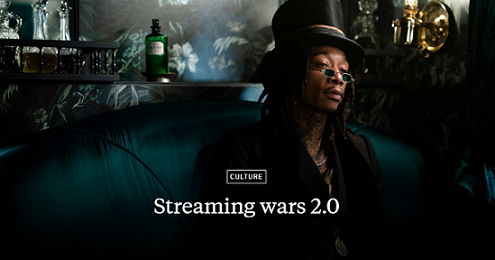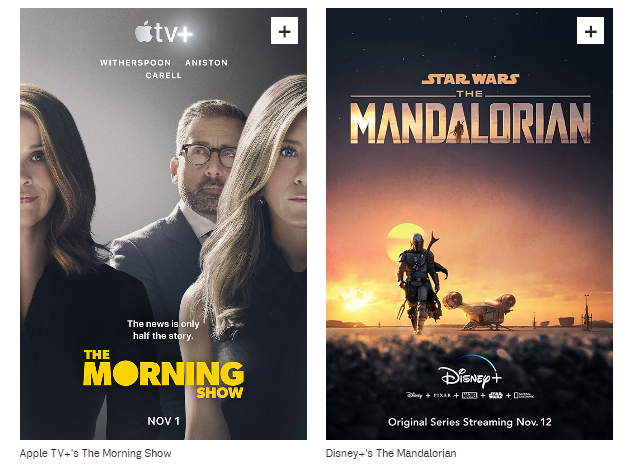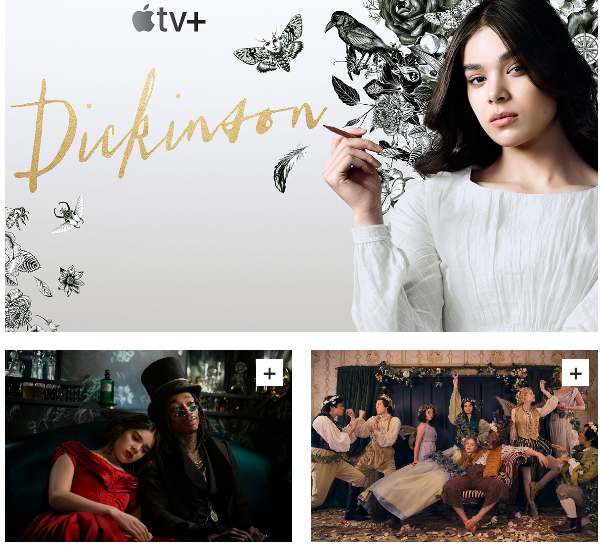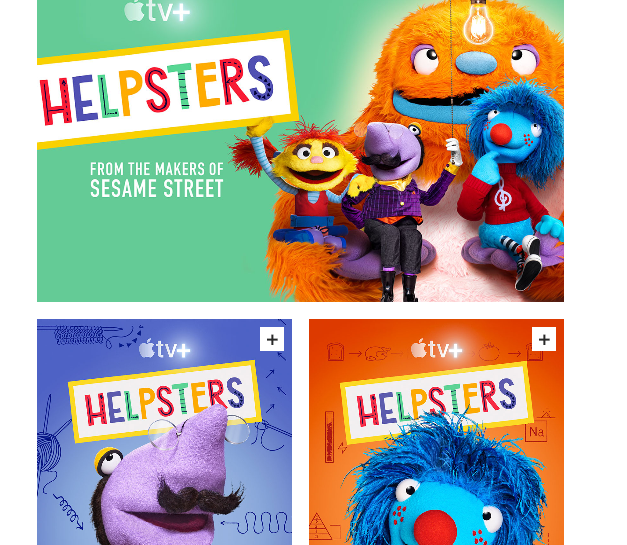 New services are saturating the market and jostling for position as the next battle of the streaming wars heats up.
New services are saturating the market and jostling for position as the next battle of the streaming wars heats up.
Netflix’s undisputed reign in the streaming world appears to be coming to an end, as a host of rival services unveil their offerings, all striving to attract a younger generation that’s accustomed to video content on demand.
Illustrating just how much viewing habits have shifted, an August 2019 YPulse report found that only 33% of US 13-18-year-olds surveyed watch content on a TV set weekly, with 73% saying they watch video content on their smartphones, and a mere 18% watching cable weekly or more. “Millennial parents are raising their kids without cable…[saying] that their kids are more likely to watch streaming services than anything else—and shaping a future where cable is seen as a rare exception,” the report says.
Amid this climate, Apple TV+ is set to bow this week, which for the price of $4.99 a month will offer “exclusive shows, movies and documentaries from acclaimed filmmakers, including JJ Abrams, Steven Spielberg and M. Night Shyamalan,” TechRadar reports. Also on its slate is a mental health docu-series collaboration between Oprah and Prince Harry, alongside an Emily Dickinson biopic, starring Hailee Steinfeld.
Meanwhile, Disney’s Disney + subscription service will debut November 12, with The Los Angeles Times reporting that the company has predicted that the $6.99-per-month service will attract between 60 million and 90 million subscribers by 2024.

AMC Theatres in October also introduced its own streaming service, the pay-as-you-go AMC Theatres On Demand. The service offers films to rent or buy once they have stopped showing in movie theaters. It links to the AMC Stubs loyalty program, which spans 20 million households, the New York Times reports, which AMC deems a “marketing advantage for movie rentals and downloads.” Acknowledging the lack of growth in people going to see films at a theater, Adam Aron, AMC’s president and chief executive, told the Times “Our theater business is mature…there is a high-growth opportunity in this digital expansion.”
And still more players are set to join the fray. NBC Universal’s streaming service, Peacock, will launch in April 2020. The company said in September that it will offer “a world-class slate of originals while also offering treasured hits from the vaults of NBC, including ‘The Office’ and ‘Parks and Recreation,’ two of the most-watched streaming series.” Indeed, ‘The Office’ was reportedly one of Netflix’s most-streamed series, with Netflix saying in a tweet that it was “sad” that NBC has taken the show back for its own platform.

And Warner Media’s HBO Max will launch in May 2020. Among its offering will be Friends, with the company reported to have spent $425 million on acquiring the series’ rights – again taking a blockbuster show away from Netflix – alongside a reported $600 million on acquiring The Big Bang Theory. HBO Max has also signed movie production deals with producer Greg Berlanti and Reese Witherspoon.
Quibi, meanwhile, will offer “snackable” eight-minute videos, and is set to launch in April 2020.
What could this intense competition mean for consumers – and brands?
Writing in the British Guardian this summer, Stuart Heritage argues that the streaming wars means “watching television is about to get very, very expensive,” as those wanting access to each service’s offerings will be forced to pay for multiple subscriptions. “There will be a point where viewers are going to hit their tolerance for monthly subscriptions…meaning that TV will become more elitist, tiered and fragmented than it already is,” he writes.

Conversely, Matthew Lynn writes in The Telegraph that the streaming wars are an example of “capitalism at its best.” “We are witnessing a burst of innovation; we are seeing a new form of creativity emerge; and consumers are being subsidized by investors. Free markets don’t have many defenders at the moment. But the streaming wars will be a lesson in how they remain the most powerful way of organizing an economy so it works for everyone,” Lynn said.
For brands advertising, there are myriad implications.
Some streaming services, such as Roku and Hulu, show ads, while NBC Universal’s Peacock streaming service will be free and ad-supported. “While other companies are pushing advertisers out, we are pulling you in… with inventory that is fully addressable, data that is fully transparent and an experience that consumers can enjoy and trust,” said Linda Yaccarino, chairman of advertising and partnerships at NBC, in May. HBO Max is also said to be planning a cheaper, ad-supported version of its streaming service to launch in 2021.
Digiday reported in April that while OTT [or streaming] accounts for 29% of TV viewing, it has only so far captured 3% of TV ad budgets, citing data from Magna Global.
But Dave Morgan, the ceo and founder of Simulmedia, noted in an October 2019 MediaPost op-ed that streaming services may not have a major impact on linear TV advertising, given that he believes the two channels attract different consumers. Morgan cites figures from Pew Research that 35% of Americans don’t have access to the fixed home broadband needed to use streaming services. “Streaming services are a luxury,” he writes. “Over-the-air TV is free to all. Low-cost bundles from cable or satellite are in many lower-income homes, where people watch lots of ad-supported TV. While those folks don’t buy as much as wealthier populations, they do spend a lot on food, cars, phones, insurance, gasoline.”
But while streaming services may not cater to everyone, there’s no doubt that they are becoming critical to legacy entertainment companies in maintaining their relevancy – and capturing the attention of younger consumers.
And with a PWC report forecasting that OTT video revenue in the US will grow at a rate of 10.3% to reach $23.7 billion in 2023, the importance of these services doesn’t look set to wane. PWC notes that “exclusive and original commissions…have proven to be the crucial determinant in the battle to attract subscribers to streaming services,” PWC says. “The level of content spend being poured into the market by both new and existing players is prodigious and shows no signs of lessening any time soon.”
In this climate, the race is on for legacy media, tech, and upstart streaming companies alike to cater to younger consumers to whom linear TV is increasingly an alien concept.
Source:JWT Intelligence


